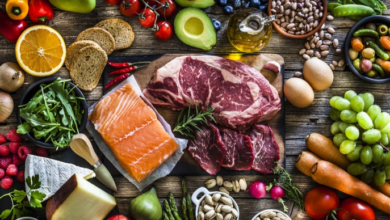
Table of Contents:
- The Foundation of a Plant-Based Pantry
- Budget-Friendly Nutrition Using Staples
- Sustainability in Everyday Cooking
- Organization and Storage for Success
- Inventive Plant-Based Meal Ideas
- Cutting Down on Waste with Smart Cooking
- Expert Advice & Resources
The Foundation of a Plant-Based Pantry
Building a robust plant-based pantry revolves around simple, nutrient-rich staples. Items such as lentils, chickpeas, oats, brown rice, canned tomatoes, nuts, and a mix of dried herbs form the backbone of nutritious dishes. Combining these basics makes it easy to assemble crowd-pleasing comfort food like Italian meatball soup by swapping traditional meatballs for lentil- or mushroom-based alternatives. This flexibility ensures that even on days when the produce drawer looks sparse, there’s always the foundation for filling, wholesome meals.
Keeping a diverse variety of grains, legumes, and canned goods makes creating colorful bowls, hearty soups, and even satisfying homemade veggie burgers possible. Using dry and canned staples allows for spontaneous concoctions, letting creativity shine in the kitchen while supporting varied nutrition all year.
Budget-Friendly Nutrition Using Staples
Eating plant-based can be accessible to almost any budget. According to the New York Times, focusing on affordable pantry staples like legumes, grains, and frozen produce stretches grocery dollars and ensures nutrient-dense meals. For example, Brown rice and lentils deliver protein and fiber to keep energy steady. Pairing them with canned tomatoes, spices, and frozen greens can create richly flavored curries, chilies, and casseroles.
In addition to saving money, meal planning with cupboard products and bulk purchasing make it simpler to eat healthily during hectic workweeks. With essentials always on hand, basic recipes can be reinvented using seasonal or leftover produce, minimizing last-minute takeout and keeping food waste low.
Sustainability in Everyday Cooking
Thoughtful use of pantry staples naturally supports sustainable cooking habits. Lentils, beans, and whole grains have a lower environmental impact than animal-based foods, consuming less land and water in production. Opting for bulk purchases in reusable containers and buying items with minimal packaging also helps lower the carbon footprint, making small environmental wins part of everyday routines.
Integrating more plant-based pantry meals into the weekly menu is a practical way to live a little greener. Reducing meat and dairy just a couple of times a week in favor of lentil stews or bean salads has measurable benefits for both health and the planet.
Organization and Storage for Success
A tidy, organized pantry encourages meal prep and minimizes forgotten food. Mason jars and stackable containers help store grains, seeds, and dried fruit neatly while keeping them fresh and visible. Simple container labeling and practicing a “first in, first out” rotation system ensure that nothing goes to waste. Shelving similar items together can spark ideas and make putting meals together seamless.
Inventive Plant-Based Meal Ideas
Plant-based cooking is highly adaptable, with a core of reliable pantry ingredients. Try transforming canned chickpeas into crispy roasted snacks or blending them into creamy hummus. Mix oats into savory veggie burgers or cook them as a base for grain bowls topped with beans, sautéed greens, and salsa. Quick pasta with tomato sauce and lentils or bean-based curries with rice are filling and easy to customize depending on what’s available.
Creative cooks will find inspiration in international cuisines—a simple can of tomatoes can become Italian soup, Mexican chili, or rich Indian daal simply by varying the seasonings and legume of choice.
Cutting Down on Waste with Smart Cooking
Effective pantry cooking naturally reduces food waste. Following the EPA’s food waste tips—such as tracking what’s in storage, working through leftovers first, and repurposing small amounts of foods—keeps meals budget-friendly and sustainable. Vegetable scraps can become homemade broth, and bits of leftover grains or beans can anchor salads or soups. Composting what remains closes the loop, ensuring every staple maximizes value before returning to the earth.
Expert Advice & Resources
Nutrition experts agree that variety and balance are keys to thriving on plant-based diets. Blending pantry staples with in-season produce brings different nutrients and flavors to every meal. Regularly restocking dried beans, grains, and spices while rotating ingredients to keep them fresh makes healthy eating simple. Involving kids or family members in restocking or meal prep can be a fun and educational way to encourage better choices and reduce waste.


